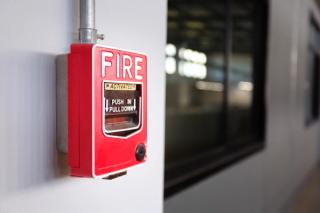
The linear economy is toast: Reducing resource constraints through a circular approach
- Post Date
- 16 September 2024
- Read Time
- 4 minutes

Several years ago, I destroyed a perfectly good toaster in the name of science.
Studying for my MSc, I had to undertake a greenhouse gas (GHG) lifecycle assessment (LCA) of a household appliance as an assessed assignment. Most of my peers used secondary data, but I picked a more practical route and chose to collect my own, via the disassembly a household toaster. Looking back, the most memorable part wasn’t the carbon impact of the toaster, but the alarming lessons about linear consumption.
The toaster meets its end
I had to procure a household appliance and being an impoverished student, I settled for a £5 toaster. The LCA required a breakdown of the constituent materials that made up the toaster and their respective weights. Shockingly the £5 toaster was not designed for disassembly [1] and - despite it not appearing to be especially sturdy - it put up a bit of a fight. After sustaining a few scratches, I sorted and weighed the toaster's components by material type. With the data in hand, I calculated the lifecycle GHG impact.
A mountain of waste
The LCA revealed that over the anticipated linear lifecycle of the toaster, it would produce approximately 18kg CO2e [2], a somewhat startling figure given the toaster’s 1.13kg weight. Even more shocking was the sheer wastefulness. With a one-year warranty, the LCA had to assume this toaster would be discarded after a year, implying a wholly new toaster be constructed from raw materials every year.
Over an average person’s lifetime, this linear model adds up to 90kg (almost 200 lbs) of toasters per person [3]. Assuming a 1:20 toaster-to-person ratio globally with today’s global population, that’s 40 megatonnes of new toasters to satisfy the lifetime toast demands of the current generation. This weight is roughly the equivalent of:
- 4,000 Eiffel Towers [4]
- 95 Golden Gate Bridges [5], or
- 82 Burj Khalifas [6]
This resource consumption isn’t sustainable, especially for key materials like copper. The estimated 2.9 megatonnes of copper needed for lifetime toaster consumption alone came to about 0.1% of the world’s total available copper (mined and yet to be mined) [7]. Copper is a key material in most electronic equipment and infrastructure, and you don’t need to know the LCA figures for every other household appliance to understand that this kind of linear consumption cannot be sustained indefinitely. And that’s before we factor in the social and environmental costs of extracting raw materials and landfilling waste.
If ‘sustainability’ is to have any real meaning it must mean operating in a way that can be maintained indefinitely. The above scenario is clearly not sustainable. So, how do we fix it?
The linear economy is toast, long live the circular economy!
The first – and most obvious – step is (perhaps controversially) to tackle consumption. At the root of the calculation above is the ‘one toaster per year’ assumption. Making a 10-year toaster immediately provides a 10-fold cut in footprint. Better products retained for longer are a big part of the answer – but they must be made affordable and accessible to all.
However, even this doesn’t get to the root of this complex problem. The reality we live in is that business growth and reduced consumption currently exist in tension. And this is where the circular model comes in. Coupled with extended product life, this circular approach can significantly reduce resource constraints and enhance positive impacts too. Businesses aiming to thrive long-term whilst helping to maintain the society we live (and many thrive) in should explore circular economy options. No longer ‘Take-Make-Waste’. Take back. Remake. Reimagine.
Actions for business
- Identify hot spots: Undertake LCAs for your products and request them from suppliers.
- Design for disassembly: The main barrier to closing the loop on my toaster was its difficult disassembly. If manufacturers design products for easy breakdown and recycling, or better yet, collect and reuse / recycle them at the end of life, they’ll help close the loop.
- Consider leasing instead of owning: Obsolescence by design fuels demand. Leasing products incentivises manufacturers to build longer-lasting, repairable products, supporting a shift from a linear to a circular economy.
-----------------------------------------------------------
Notes and references
- Definition of the term ‘designed for disassembly’: the consideration of the ease of disassembly in design process (Veerakamolmal and Gupta, 2000).
- High-level estimate using LCA emission factors, the UK grid average emissions per kWh (published 2024 by the UK Government), and assuming a usage phase of one year.
- Assuming an average life expectancy of 80.6 years, (and assuming consumption of toast occurs after the age of 1). 1.1287 kg (the weight of the toaster) X 79.6 years = 89.8kg of toasters per person.
- https://www.toureiffel.paris/en/the-monument/key-figures
- https://www.goldengate.org/bridge/history-research/statistics-data/design-construction-stats/#:~:text=Original%20combined%20weight%20of%20Bridge,894%2C500%20tons%20(811%2C500%2C000%20kg)
- https://www.burjkhalifa.ae/img/FACT-SHEET.pdf
- https://www.usgs.gov/faqs/how-much-copper-has-been-found-world
Recent posts
-

-

-

Understanding sound flanking: Fire alarm speaker cable conduits in multi-family buildings
by Neil Vyas
View post